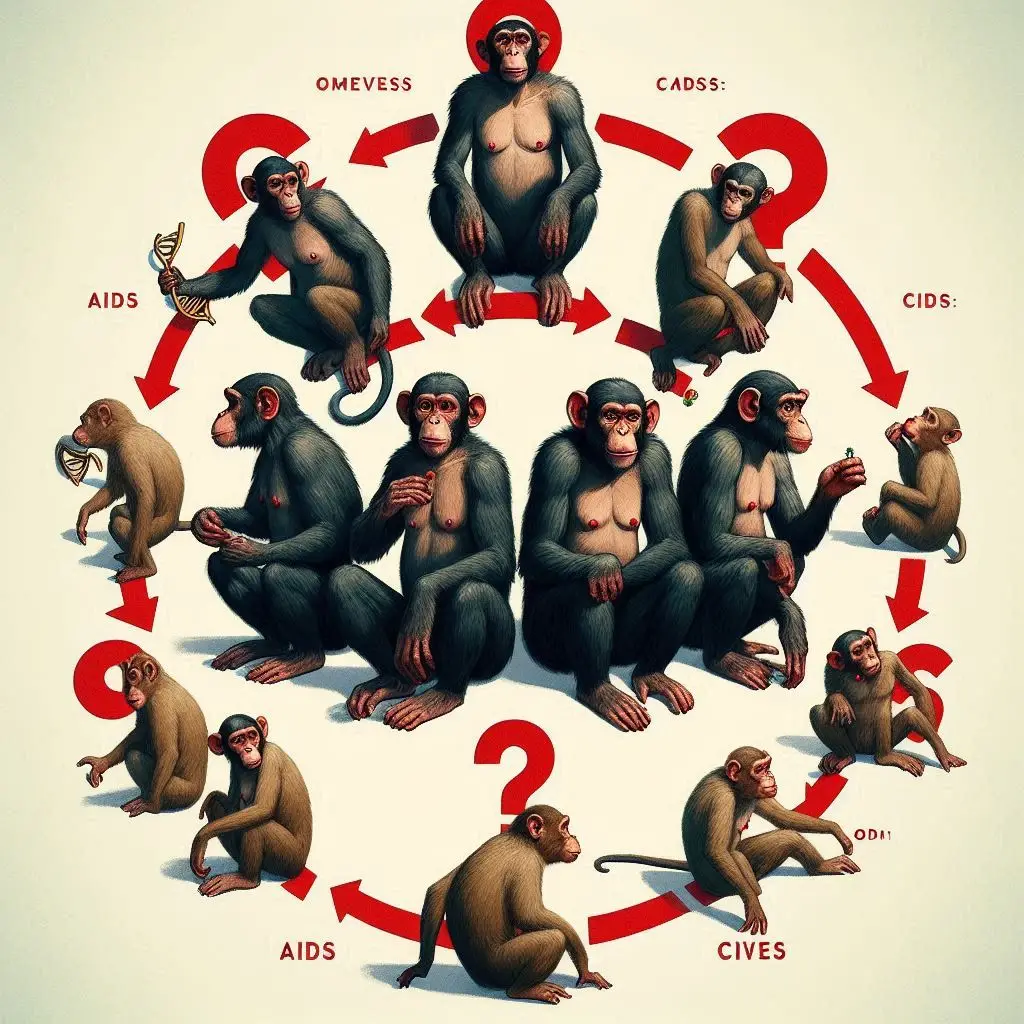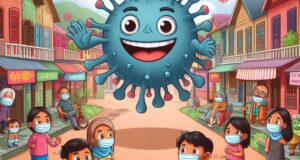Imagine a silent forest where time seems to slow down — a place teeming with life yet untouched by human complexity. If you’ve ever wondered, AIDS: where did it come from?, the answer lies in a hidden biological drama now referred to as the Primate Spillover Nexus.

This nexus is not just a scientific term — it is a poetic crossroads, a bridge between species, and a doorway through which an ancient virus stepped into a new world. Long before HIV had a name, its ancestor, SIV (Simian Immunodeficiency Virus), lived quietly in chimpanzees and other primates. SIV didn’t devastate its natural hosts the way HIV does in humans — it coexisted with them. But the moment it left its native home and entered human blood, everything changed.
The Primate Spillover Nexus represents that crucial, fateful moment when the virus crossed species — likely through blood contact during bushmeat hunting or butchering, where infected chimpanzee blood came into direct contact with human wounds. One might picture it as a viral stowaway, leaping from one bloodstream to another, cloaked in the illusion of harmlessness. This spillover wasn’t an explosion; it was a quiet infiltration — subtle, slow, and lethal.
What makes this phenomenon truly remarkable is its uniqueness. Not every virus can cross from animals to humans, and even fewer can adapt and spread between humans efficiently. The AIDS: where did it come from? question finds its first real answer here — at this fragile interface of ecology, behavior, and biology. The forests weren’t just natural landscapes; they were living laboratories, where nature conducted experiments across centuries.
Once HIV entered humans, the virus began its journey along colonial railroads, through medical practices involving unsterilized needles, and into growing urban centers like Kinshasa. But the true origin, the spark that lit the fire, remains the Primate Spillover Nexus — a term that encapsulates both mystery and science.
The phrase may sound like something out of a sci-fi novel, but it holds immense weight in epidemiology. It is where species barriers are breached, not through intent, but through biological chance — a slot machine of evolution, played deep in the heart of the jungle.
Think of the Primate Spillover Nexus as a viral handshake — one that wasn’t meant to be, yet now binds millions of lives in its aftermath. It’s a reminder of how fragile our separations from the animal world really are, and how intimately our destinies are intertwined with other species.

Today, when scientists trace back the viral family tree, they arrive at this very moment — the invisible handshake, the molecular leap, the primal whisper that became a global scream. This is where AIDS truly began.
So next time the question arises — AIDS: where did it come from? — remember the Primate Spillover Nexus. Not just as a scientific concept, but as a real, raw, and haunting origin story written in the blood of two species — and echoed in the lives of millions.




